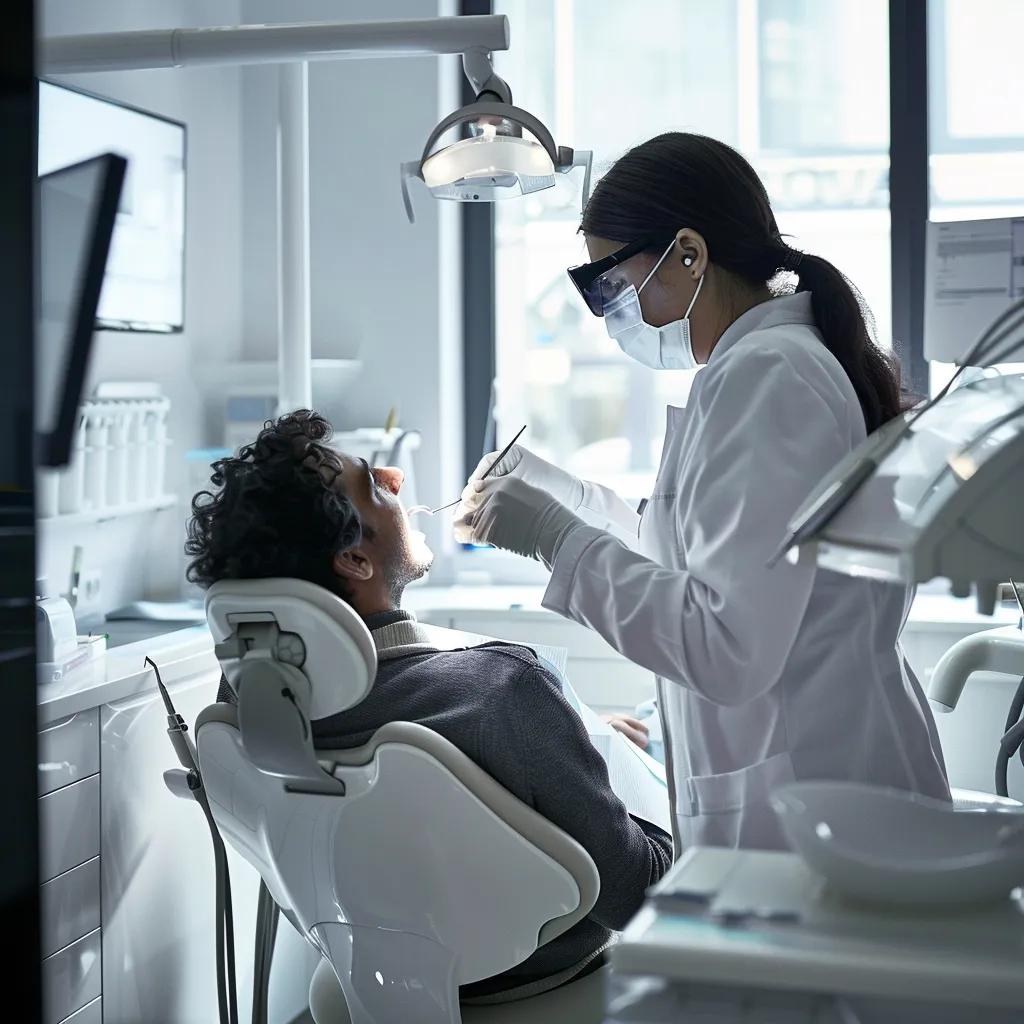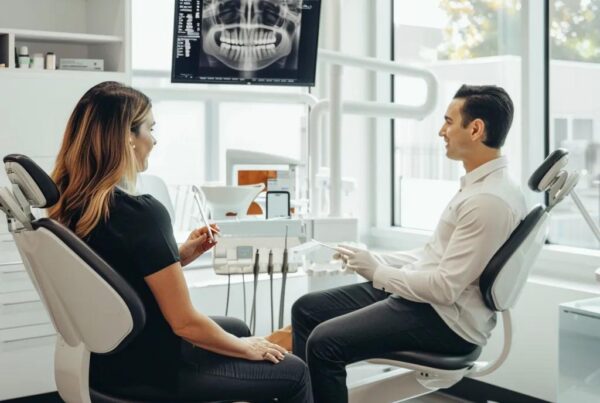The Importance of Immediate Dental Trauma Care
When a dental emergency happens, the pain is only part of the story. Dental trauma can be alarming, disorienting, and emotionally overwhelming—especially when it involves a child or results from a sudden accident. Whether it’s a cracked molar during dinner, a sports-related collision, or a slip and fall on a hard surface, knowing what to do in the first few minutes can significantly impact the outcome.
At Fountain of Youth Dental, we view dental trauma as a serious medical situation that deserves immediate attention. Delays in treatment can lead to infection, long-term damage, or even permanent tooth loss. This guide is designed to help you act quickly and confidently. In the pages ahead, we’ll show you how to recognize different types of injuries, administer first aid, understand treatment options, and prevent future accidents.
Types of Dental Injuries and Their Symptoms
Not all dental trauma looks the same. Some injuries are obvious—like a tooth that’s been knocked out—while others, such as root fractures or soft tissue injuries, are less visible but no less serious. Identifying the type of trauma early can prevent further complications and guide timely intervention.
Dental trauma can be divided into five common categories, each with its own symptoms and treatment needs. Recognizing which category your injury falls into is the first step in determining the right course of action.
Chipped or Fractured Teeth
Minor chips may only affect the enamel, while deeper fractures can involve the dentin or even the pulp of the tooth. Pain may be immediate or delayed, depending on how deep the fracture goes. Some chips are purely cosmetic but others can cause sharp edges that irritate the tongue or cheek.
Watch for:
- A visibly missing portion of the tooth
- Sharp edges that cut soft tissue
- Sensitivity to temperature or pressure
Even if there’s no pain, chipped or fractured teeth should be assessed by a dentist to determine whether restorative treatment is needed to prevent infection or further breakage.
Knocked-Out (Avulsed) Teeth
A knocked-out tooth is a true dental emergency. For permanent teeth, successful reimplantation is most likely if it happens within 30 to 60 minutes of the injury. Time is critical.
Symptoms include:
- A gap in the mouth where the tooth once was
- Bleeding or swelling around the socket
- Intense pain or numbness
Handle the tooth by the crown, never the root, and store it in milk or saline solution until you reach the dentist. Do not reinsert baby teeth.
Dislodged (Luxated) or Loose Teeth
Teeth that are pushed out of alignment but still in the socket are considered luxated. They may be partially extruded (pushed out), intruded (pushed in), or shifted sideways. These injuries often affect the root and supporting structures.
Key signs:
- Tooth feels loose or misaligned
- Gums may be bruised or bleeding
- Pain with biting or chewing
Prompt splinting by a dentist is often required. Delaying care increases the chance of root resorption or infection.
Soft Tissue Injuries
Injuries to the lips, cheeks, tongue, or gums are common in both kids and adults. They can result from bites, falls, or contact with sharp dental edges.
Watch for:
- Cuts, bruises, or swelling in the mouth
- Bleeding that doesn’t stop within 10–15 minutes
- Pain when talking or eating
Even minor injuries should be cleaned and checked by a dentist, especially if debris is embedded in the wound.
Jaw or Facial Bone Injuries
Fractures to the jaw or facial bones are serious and sometimes life-threatening. These injuries are typically the result of blunt force trauma and should be evaluated immediately.
Symptoms include:
- Difficulty opening or closing the mouth
- Bite feels off or uneven
- Swelling, bruising, or misalignment of the jaw or face
In these cases, go directly to the ER. Emergency physicians and oral surgeons work together to manage facial fractures.
First Aid Steps for Dental Trauma
Knowing how to respond in the minutes after an injury can make all the difference. Whether you’re at home, at school, or on the field, these first aid steps can help preserve teeth and reduce complications before you reach the dentist.
First aid must be tailored to the type of injury. But regardless of severity, your primary goals are to control bleeding, reduce swelling, and preserve any dislodged teeth or tooth fragments.
Recommended First Aid:
- For chipped or fractured teeth: Rinse the mouth with warm water. Save any broken pieces. Cover sharp edges with wax or sugar-free gum.
- For knocked-out teeth: Pick up by the crown, rinse gently, and attempt reinsertion if possible. Otherwise, store in milk or saline.
- For dislodged teeth: Do not push the tooth back in. Apply light pressure with gauze and see your dentist immediately.
- For soft tissue injuries: Apply a clean cloth to control bleeding. Use cold compresses on the outside of the face to reduce swelling.
- For jaw injuries: Immobilize the jaw and seek emergency medical care.
Avoid common mistakes like storing a tooth in water, touching the root, or waiting until the pain worsens. Quick, proper action increases the chances of a positive outcome.

Professional Treatment Options
Once you arrive at Fountain of Youth Dental, we begin with a full evaluation using clinical examination and digital imaging. This allows us to determine the extent of injury and develop a tailored treatment plan.
Our emergency protocols prioritize saving teeth whenever possible. We also offer a full range of sedation options to keep you comfortable during urgent care.
Diagnostic and Treatment Tools:
- Digital X-rays and 3D CBCT scans to evaluate bone and root structures
- Bonding, crowns, or veneers for chipped or fractured teeth
- Reimplantation and splinting for avulsed or luxated teeth
- Root canal therapy for damaged pulp
- Surgical intervention for facial or jaw fractures
Soft tissue injuries are cleaned and stitched if necessary. All patients are provided with detailed aftercare instructions and scheduled follow-ups to ensure complete recovery.
With our gentle, patient-focused approach, you’ll feel supported from the moment you arrive to your final follow-up visit.
Recovery and Prevention
Healing from dental trauma takes time and attention. The type of injury and the treatment you receive will determine your recovery timeline. Our team provides clear guidance on what to expect, how to care for your mouth, and when to return for follow-up.
Preventing future injuries is just as important as healing from the current one. With a few smart strategies, you can drastically reduce your risk of repeat trauma.
Post-Treatment Care and Prevention:
- Use a soft-bristled brush and rinse gently with salt water or antiseptic mouthwash
- Avoid chewing on the injured side until fully healed
- Wear a custom mouthguard for sports or nighttime grinding
- Schedule routine checkups to monitor for complications
- Report any unusual symptoms like persistent pain, swelling, or color changes in the tooth
Staying vigilant after treatment helps protect your investment in care and keeps your smile strong for the future.
Why Choose Fountain of Youth Dental for Dental Emergencies
In a dental emergency, you don’t want to be put on hold. At Fountain of Youth Dental, we’ve designed our practice to handle trauma cases swiftly, compassionately, and affordably. From 24/7 phone access to same-day treatment, you’ll never feel like just another appointment.
Our team is trained in modern emergency dentistry and equipped with state-of-the-art tools to diagnose and treat a wide range of injuries. We also offer transparent pricing and flexible payment plans, so you can focus on healing—not finances.
Our Emergency Care Advantages:
- Immediate scheduling for trauma patients
- Compassionate, bilingual staff and calming environment
- Sedation dentistry to reduce anxiety
- Affordable in-house plans and financing
We’re more than a dental office—we’re a safety net when you need one most.
Fountain of Youth Dental Is on Your Team
Preventing dental emergencies is a team effort—and you don’t have to do it alone. We’re here with friendly reminders, expert checkups, and customized care to keep your smile strong.
Whether it’s time for your next visit or you’re worried about something new, give us a call. Let’s take care of it together.
Ready for a dentist who cares as much as you do about your smile? Contact Dr. Cappetta today to schedule a no-pressure consultation. You can also call us at (210) 614-5481.
With Fountain of Youth Dental, you can stop settling and finally get the healthy, stunning smile you deserve!
Schedule Your Free Consultation Today!
Fountain of Youth Dental
5282 Medical Dr. #520 San Antonio, TX 78229 (210) 614-5481 Driving Directions VISIT OUR WEBSITE
FAQs
What if I can’t reinsert a knocked-out tooth?
Place it in milk or a tooth preservation kit and get to the dentist immediately. Do not store it in water.
Can I go to urgent care for dental trauma?
For injuries involving teeth, your best care will come from a dentist. Go to urgent care only for jaw fractures, facial trauma, or uncontrolled bleeding.
How soon should I see the dentist after a dental injury?
Within one hour for knocked-out teeth; within 24 hours for all other trauma.
Related Articles
Emergency Dental Care Tips, Dental Emergency Symptoms, Common Dental Emergency Procedures, Responding to Dental Emergencies, Dental Emergency Insurance, Toothaches, Traumatic Dental Injuries, Sedation Dentistry, Emergency Dentistry, Emergency Dental Services, Emergency Dentist San Antonio, Tooth Ache Relief, Dental Emergency Prevention, Tooth Abscess Symptoms, Dental Trauma





